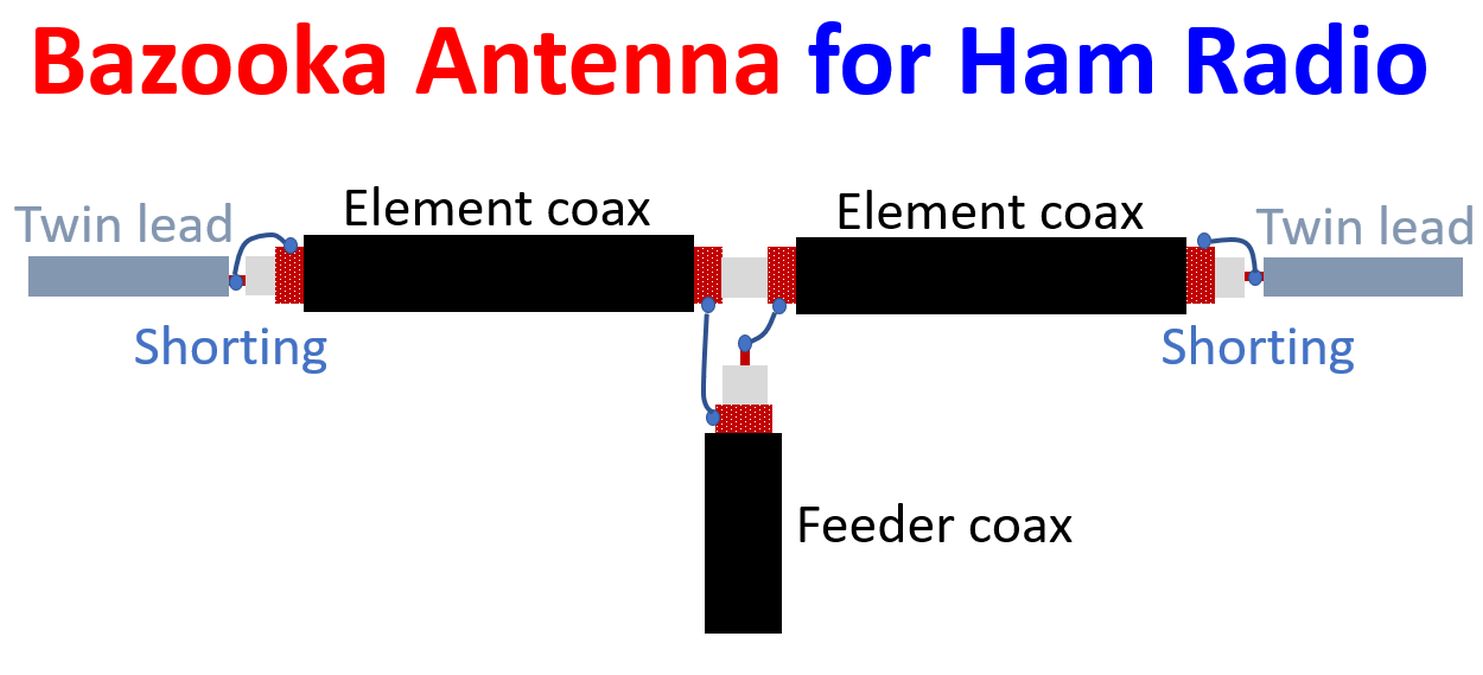Bazooka Antenna for Ham Radio
Bazooka Antenna for Ham Radio
Bazooka Antenna is a Coaxial Dipole Antenna with the main part made of coaxial cable. It was originally designed by the staff at Massachusetts Institute of Technology for radar use, with coaxial cable for the entire radiating elements. Adaptation for ham radio uses coaxial cable only for the broadbanding portion while ladder line is used for the rest of the antenna. Bazooka antenna is a single band antenna with a broad bandwidth within the band, unlike the dipole which has only a bandwidth upto 100 KHz. Moreover, Bazooka antenna does not radiate harmonics of the operating frequency and feedline radiation is very little.

Bazooka antenna modified for Ham radio uses does not need a matching balun and can be directly connected with 50 Ohm coax. As the antenna has no exposed metal wire, static charges do not build up and reduces noise compared to exposed wire antennas. Bazooka antenna consists of a half wavelength coaxial line with outer conductor cut at the center and the feed line connected to the cut ends of the outer conductor. Inner conductor is not cut and does not radiate. It acts as a quarter wave shorted stub and serves to increase the bandwidth by cancelling reactance at off resonant frequencies.
Central conductor and shield of the antenna element coax are soldered together at both ends (shorted). Two wires of the ladder lines are soldered to this joint on both sides of the coaxial antenna elements. The other ends of the ladder lines are also shorted by soldering the wires together. K5IJB has provided calculations of lengths of the coaxial cable segments and twin lead segments for various amateur radio bands from 40m to 6m.